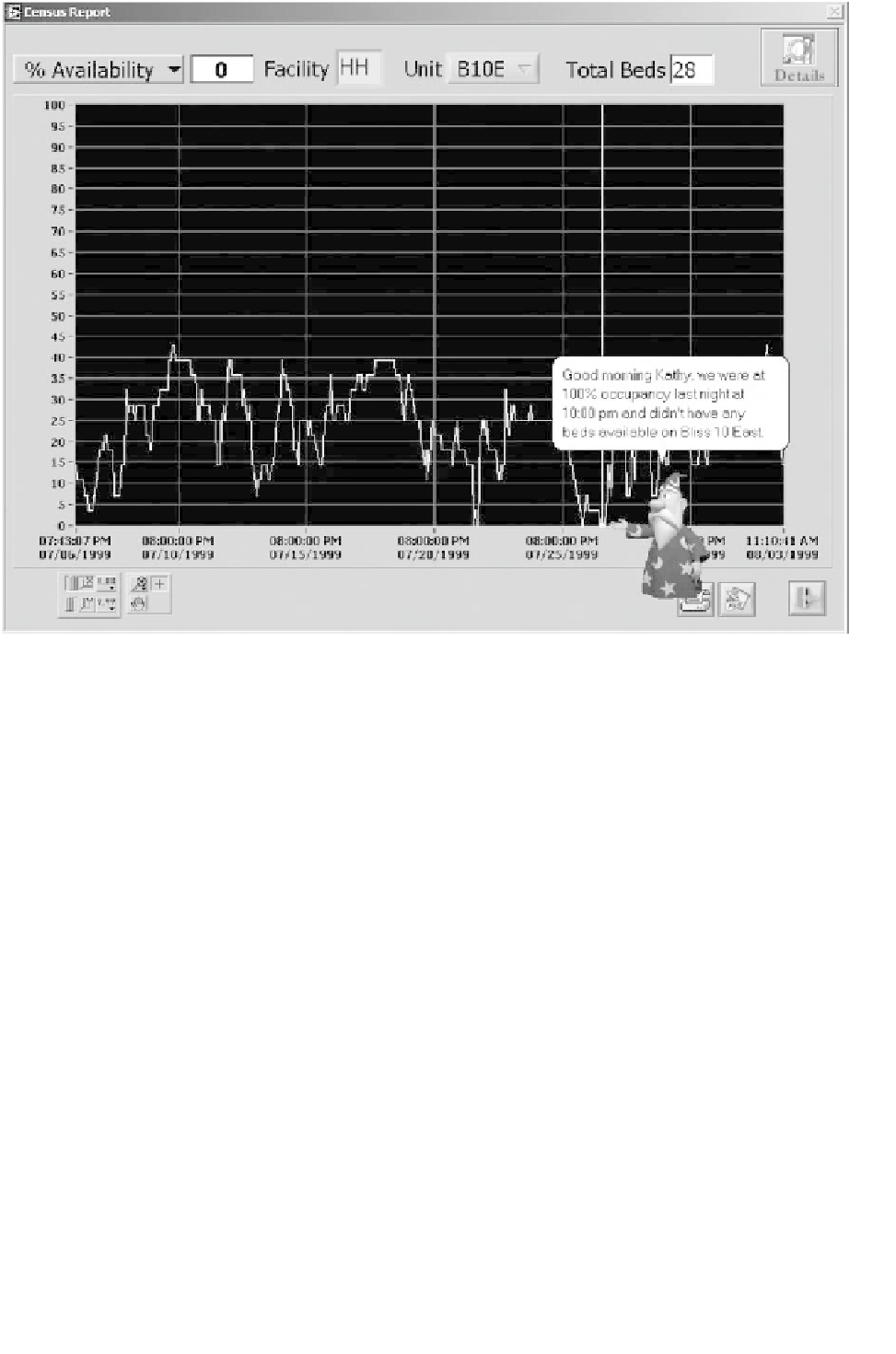Biomedical Engineering Reference
In-Depth Information
Figure 5.5-8 Intelligent Agents: The BMD can also employ online ''intelligent agents'' to provide assistance and to alert the user of
important alarm conditions that otherwise might have gone unnoticed. Messages can be in the form of an on-screen agent (such as Merlin
the Wizard) or via e-mail, pager, fax, and/or telephone.
Interactive ''threshold cursors'' dynamically highlight
when a parameter is over and/or under a specific target.
Displayed parameters can also be ratios of any measured
value (e.g., ''Expense per Equivalent Discharge'' or
''Revenue to Expense Ratio''). The indicator color will
change, based on the degree to which the data value
exceeds the threshold value (e.g., from green to yellow to
red). If multiple thresholds are exceeded, then the entire
background of the screen (normally gray) will change to
red, to alert the user of an extreme condition.
Finally, multimedia has been employed by PIVIT to
alert designated personnel by an audio message from the
personal computer or by sending an automated message
via e-mail, fax, pager, or mobile phone.
PIVIT is also able to profile historical trends and to
project future values. Forecasts can be based on user-
defined history (e.g., ''Months for Regression''), the type
of regression (linear, exponential, or polynomial), the
number of days, months, or years to forecast, and whether
any offset should be applied to the forecast. These fea-
tures allow the user to create an unlimited number of
''what-if'' scenarios and to allow only the desired range of
data to be applied to a forecast. In addition to the graphical
display of data values, historical and projected tables are
also provided. These embedded tables look and function
like a standard spreadsheet.
Data modeling
Figure 5.5-12
illustrates another way in which VI can be
applied to financial modeling and forecasting. This ex-
ample graphically profiles the annual morbidity, mortality,
and cost associated with falls within the state of
Connecticut. Such an instrument has proved to be an
extremely effective modeling tool due to its ability to
high-light relationships and assumptions interactively, and
to project the cost and/or savings of employing educa-
tional and other interventional programs.
Virtual instruments such as these are not only useful
with respect to modeling and forecasting but, perhaps
more importantly, they become a ''knowledge base'' in
which interventions and the efficacy of these interventions
can be statistically proved.
The example program in
Figure 5.5-13
shows ways in
which VI can employ standard Microsoft Windows






